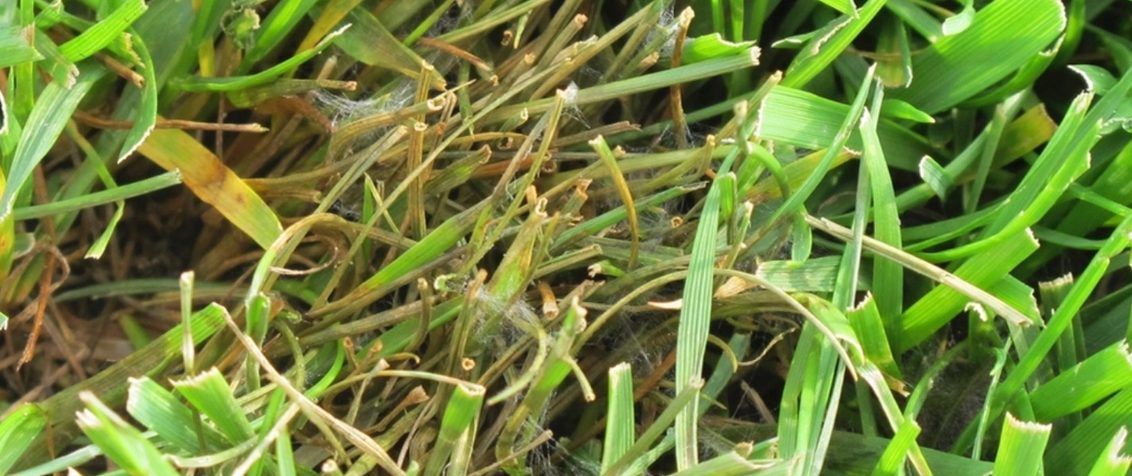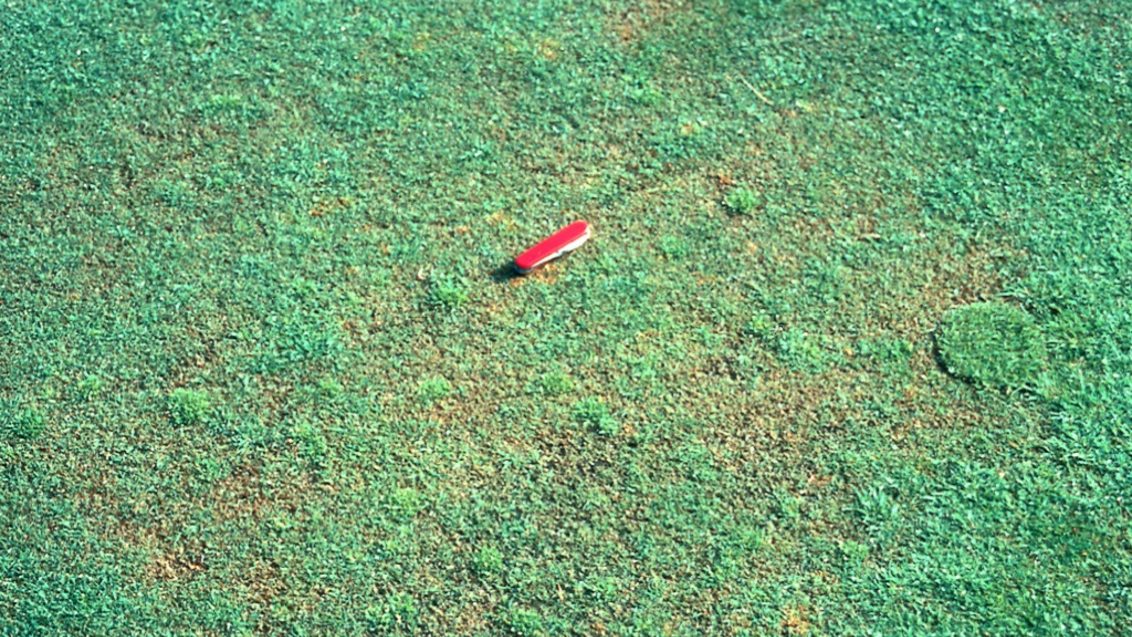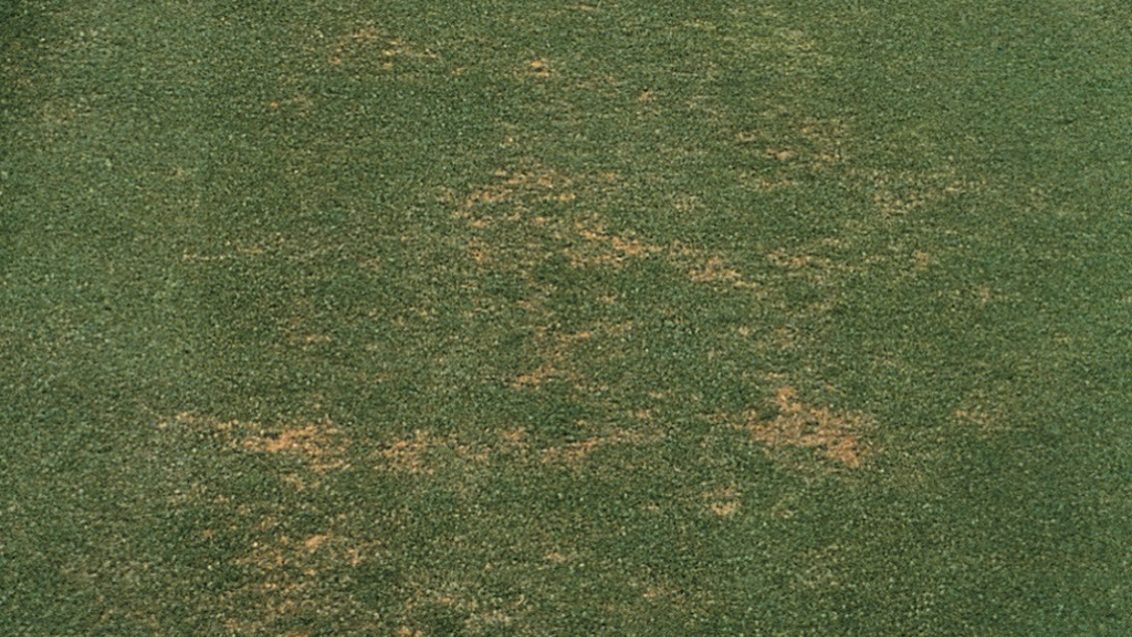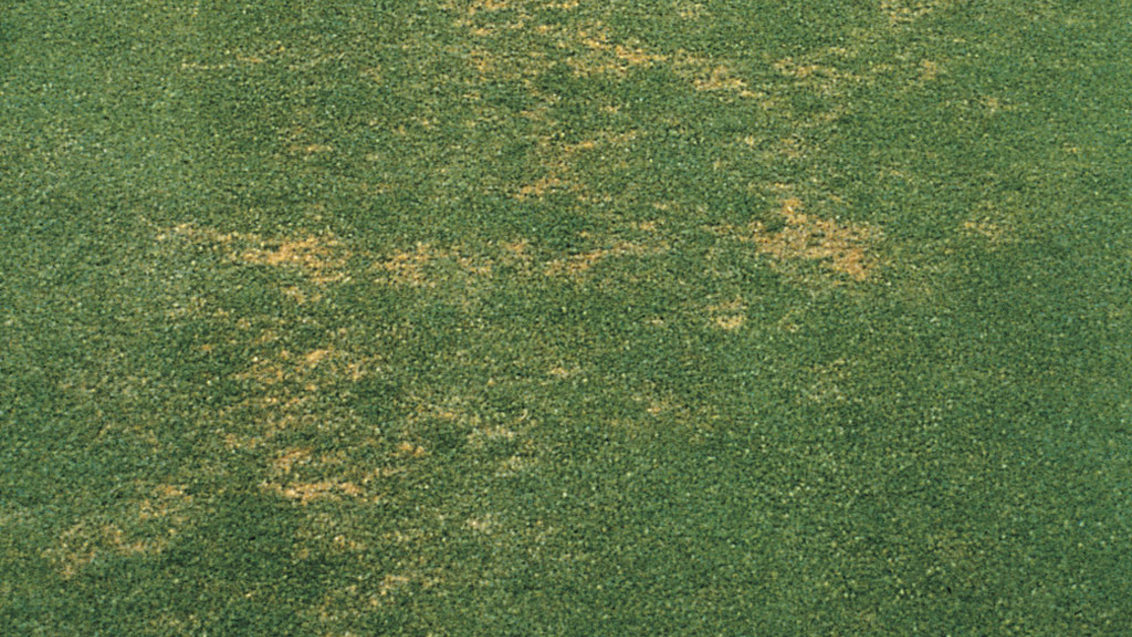Pythium Root Rot
Turf Disease
Pythium Root Rot (Root Dysfunction) is common on highly maintained turf, such as golf course greens. Although symptoms of Pythium Root Rot are typically non-distinctive, this disease can appear as yellow, irregularly shaped patches.
The affected turfgrass is thin, off-colour, and slow growing, while the root system is stunted with reduced volume and vigour. Foliar mycelium does not occur.
Caused by: Pythium aphanidermatum, Pythium aristosporum, Pythium graminicola, Pythium vanterpooli, other Pythium species.

Susceptible Turfgrass: Species grown on putting greens, such as Annual Bluegrass, Bentgrass, and Bermudagrass.
Conditions favouring Disease:
Some Pythium species favour temperatures between 0°C and 10°C while others thrive in temperatures between 21°C and 32°C. Pythium root rot occurs in
areas with high soil moisture, poor drainage, and low light. It also infects locations with low mowing height and excessive wear.
Integrated Turf Management:
- Increase the height of cut.
- Apply optimum amounts of nitrogen, phosphorous, and potash.
- Reduce mowing frequency and use lightweight mowers.
- Avoid overwatering.
- Apply low amounts of nitrogen in the Spring when roots are forming.
- Minimise the amount of shade.
- Improve the drainage of the turf.
- Reduce soil compaction.
- Apply penetrant fungicides on a preventive basis.
Fungicidal Control:
Heritage has label recommendation for Pythium Root Rot in the United Arab Emirates.



